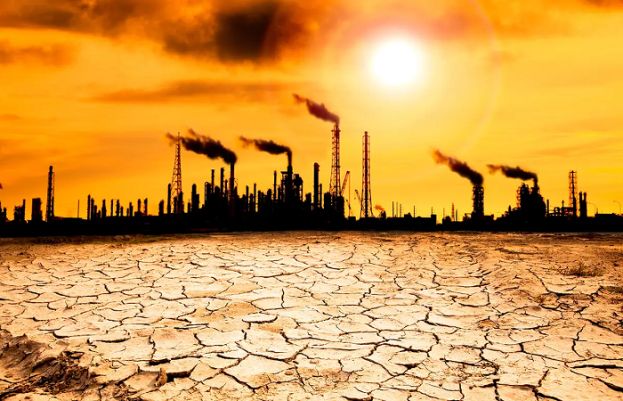Unprecedented global temperature rises will likely see the Paris Agreement’s 1.5 degrees Celsius (2.6 degrees Fahrenheit) threshold breached at some point in the next five years, a United Nations (U.N.) report predicts.
The U.N.’s World Meteorological Organization (WMO) gave the stark warning in its latest annual assessment. According to the WMO, there is a 66% chance that annual mean global surface temperatures will temporarily breach the threshold of a 1.5C rise above pre-industrial levels. This would be the first time in human history that such a rise had been recorded.
Scientists have warned that crossing the 1.5C threshold greatly increases the risks of encountering tipping points that could unleash irreversible climate breakdown — such as the collapse of the Greenland and West Antarctic ice sheets; extreme heat waves; severe droughts; water stress; and extreme weather across large parts of the globe.
Around 200 countries pledged to limit global temperature rises to 1.5C or under in the 2015 Paris (opens in new tab)Agreement. Now, even if just temporarily, that limit could be breached for the first time.
“A warming El Niño is expected to develop in the coming months and this will combine with human-induced climate change to push global temperatures into uncharted territory,” Petteri Taalas(opens in new tab), the secretary general of the WMO, said in a statement(opens in new tab). “This will have far-reaching repercussions for health, food security, water management and the environment. We need to be prepared.”
El Niño occurs when trade winds, which typically push warm water westwards across the Pacific Ocean from South America to Asia, weaken, keeping more of the warm water in place. This strongly affects climate patterns around the world, making South America wetter and bringing drought (and sometimes famine) to regions such as Australia, Indonesia, Northern China and Northeastern Brazil.
In the U.S., El Niño tends to make northern regions warmer and dryer, and southern regions wetter, and because it causes warmer water to spread further and remain near the surface of the ocean, it also heats up the atmosphere around the world.
The latest WMO report covers the years 2023 to 2027. It says there is a 98% chance that one of the next five years will be the hottest ever — exceeding 2016’s 2.3 F (1.28 C) record temperature rise.
The chances of higher temperature swings are also increasing: The odds of breaching the 1.5C temperature threshold was near zero in 2015; it rose to 48% in 2022; and is now 66% just a year later.
The researchers said much of this warming would be unevenly distributed. The Arctic, for instance, will see temperatures fluctuate by three times as much as the rest of the world, accelerating melting that could severely impact weather systems such as the jet stream and the North Atlantic current — crucial systems for the regulation of temperatures in the Northern Hemisphere.
Rainfall, meanwhile, is expected to decrease across Central America, Australia, Indonesia and the Amazon. Deforestation, climate change, and burnings have caused the gigantic rainforest to lose some of its resilience since the 2000s, leading to concern among scientists that it may cross a tipping point that could transform it into savanna.
The report notes there is only a 32% chance that the five-year mean will exceed the 1.5C threshold, but this average has nonetheless risen dramatically since 2015, when it was near-zero.
“This report does not mean that we will permanently exceed the 1.5 C level specified in the Paris Agreement which refers to long-term warming over many years,” Taalas said. “However, WMO is sounding the alarm that we will breach the 1.5 C level on a temporary basis with increasing frequency.”
UN report warns global warming to reach 1.5 C threshold in 5 years

